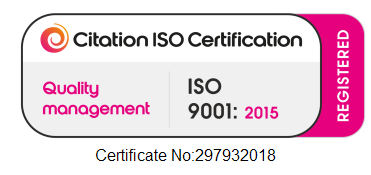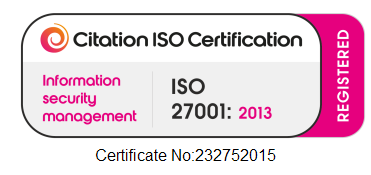
11 Feb 2025
The Significance of International Day of Women and Girls in Science
Celebrated annually on 11th February, International Day of Women and Girls in Science is a powerful reminder of the importance of championing gender equality in a field that continues to evolve and shape the future, and is a day recognised by the United Nations to highlight the contributions women have made to science, technology, engineering and mathematics (STEM), whilst addressing the systemic barriers they still face.
And yet, despite considerable progress, there remains a stark gender disparity in STEM, making this day essential for sparking conversations and inspiring change.
Globally, women account for just 33% of researchers, and in the UK, the statistics are even more striking as according to the WISE Campaign, women made up only 28% of the UK STEM workforce in 2023. And whilst this figure has improved over the years, the underrepresentation of women in engineering, technology and physical sciences is still evident.
But the issue isn't a due to a lack of talent or interest, as young girls often outperform boys in STEM-related subjects at school according to WISE. In actual fact, a drop-off occurs in higher education and professional fields, which is often recognised as being driven by stereotypes, lack of role models and gender biases that discourage women from pursuing these careers.
Why International Day of Women and Girls in Science Matters
The International Day of Women and Girls in Science is a call to action which emphasises the need to create environments where women can thrive in STEM, free from prejudice or limitations.
Events and campaigns across the UK mark the occasion, from workshops aimed at schoolgirls to lectures to networking opportunities for professionals, and by fostering conversations around gender disparities and highlighting success stories, these activities aim to inspire the next generation of female scientists, engineers, and innovators.
What’s more, highlighting women's achievements underscores the vital contributions they make to society. For example, Dame Jocelyn Bell Burnell, who discovered pulsars in 1967, has used her platform to advocate for women in physics, and in 2018 donated her £2.3 million Breakthrough Prize to fund scholarships for women and underrepresented groups in science, exemplifying how individual actions can have a far-reaching impact.
Likewise, Dr. Anne McLaren is another fine example here - a pioneering developmental biologist from the UK whose groundbreaking work on in vitro fertilisation (IVF) has led to millions of families realising their dream of parenthood, with a legacy demonstrates how the contributions of women in science can fundamentally change lives and inspire generations, proving that individual breakthroughs can have profound global effects.
We also have Rosalind Franklin, a name synonymous with DNA who played a pivotal role in discovering its double-helix structure, and whose meticulous X-ray diffraction work laid the foundation for Watson and Crick's Nobel-winning discovery, and Mary Anning, a fossil hunter from Dorset in the early 19th century who is considered one of the greatest palaeontologists, despite facing prejudice as a working-class woman in a male-dominated field.
And most recently there is Professor Sarah Gilbert, who co-developed the Oxford-AstraZeneca COVID-19 vaccine and helped to save countless lives during a time of global crisis.
These inspirational women are prime role models and proof of the phenomenal achievements women can achieve within the STEM field, and it’s their successes which makes the International Day of Women and Girls in Science so important.
The Current Landscape of Women In STEM
Over recent years, efforts to increase gender diversity in STEM have been gaining momentum, although progress is uneven across disciplines.
For example, in the UK, only 16% of engineering undergraduates and 22% of technology undergraduates are women, according to Engineering UK’s 2024 report. However, women are better represented in life sciences and medicine, with 50% of medical students identifying as female, and whilst this is encouraging, disparities do remain in career progression, with far fewer women occupying senior roles in these fields.
Organisations such as STEM Learning, the UK’s largest provider of education and career support in STEM, are making significant strides in addressing these challenges, with campaigns such as "Girls in STEM" which aims at introducing school-aged girls to STEM opportunities, providing access to female mentors and creating pathways to professional success. Similarly, the WISE Campaign offers resources to employers, encouraging them to recruit and retain women in science-based roles, and other projects are rumoured to be launching within 2025-2027 to further encourage more women and girls to explore the field.
Barriers To Gender Equality In STEM
However, despite the many ongoing efforts, systemic barriers still exist, as the 2024 "Women in STEM" report by the Institute of Physics found that many women leave STEM careers due to workplace cultures that undervalue their contributions, lack of flexibility in roles and unconscious biases - challenges which disproportionately affect women from minority backgrounds and amplify the need for intersectional approaches to gender equality.
As well as this, one of the most significant issues is the visibility of role models, as when young girls fail to see women succeeding in STEM, it becomes harder to envision themselves in these roles.
The media also plays a critical role here, particularly as representations often show stereotypes and portray scientists and engineers as predominantly male, when what actually is needed is for the media to celebrate women’s achievements in science, both historically and contemporarily, in an effort to address the imbalance.
Speed Medical’s Commitment to Progress
As an organisation deeply rooted in the healthcare industry, Speed Medical recognises the value of gender diversity and the importance of celebrating days such as the International Day of Women and Girls in Science, and we’re proud champions of equality and inclusivity within the STEM field.
We aim to reflect the absolute best of the industry, recognising that diversity is key to innovation and excellence, as we look ahead to what the future holds, its inclusion of women and girls depends on continued action at every level, from classrooms to boardrooms.
We believe that by breaking down barriers, challenging biases and fostering an environment where talent can thrive irrespective of gender, we can create a more equitable world, and whilst International Day of Women and Girls in Science serves as a vital reminder of the work still to be done, it also celebrates the achievements of women who have paved the way and continue to inspire and revolutionise the scientific world.
If you would like more information on Speed Medical, please visit www.speedmedical.com, contact our team via email at info@speedmedical.com or call us directly on 0330 094 8749.






